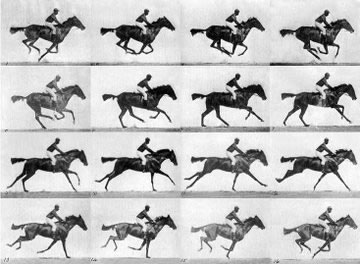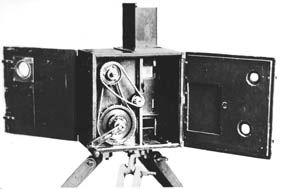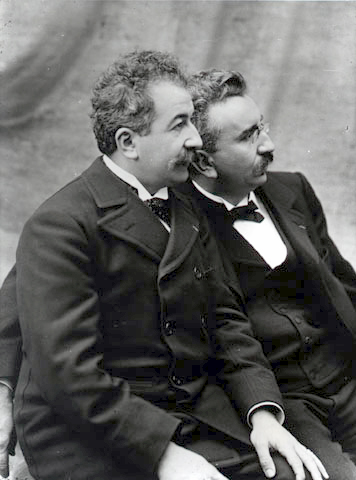Road of Childhood Memories
When you move from one country to another to live, you think you gathered the things you had planned previously. But it is not always true! Before coming to Vancouver , my childhood pictures were among those things that I had planned to bring to refresh my memory, from time to time. Till now I haven’t found them and even this weekend I searched the whole home but it was useless. Thanks to flickr and Web 2.0 that help to feel some of those memorable places, people, food, .…and remember you that once upon a time you were there and you know those railroads, places, people.
Some of the pictures seem to be exactly the same as of my own pictures and the others are very similar. You can have a look at them here.
December 14, 2009 No Comments
U-Learning

U-learning seems to be another interesting terminology in the field of education. I saw it first time when I was reading “The World Is Open” book. In that book, Bonk (2009) states that U-learning takes advantage of the capabilities of mobile and wireless technologies to support a seamless and pervasive connection to learning without explicit awareness of the technologies being relied upon. In fact, if you are using technology to learn without reflecting on it, you are likely experiencing u-learning. With the increasing mobility, connectivity, and versatility of educational technologies, there is the potential to devise environments where learning is taking place all the time and for anybody seeking it. And when options for learner participation (not just learning consumption) are added in, learning becomes a more personalized and customized 24/7 experience.
By considering that similar definitions can also be found in other on-line learning fields, in fact, is U-Learning another charming terminology for online education to beat the classroom? Or is it a really new terminology that we need? When I was thinking about these questions I just remembered Bolter saying “hypertextual writing can go further, because it can change for each reader and with each reading”. He also mentioned that technology transforms our social and cultural attitudes toward uses of technology. I think Bolter had predicted today’s learning technologies in 1991, at least in principles.
On the other hand Bolter emphasized that “in the late age of print, however, we are concerned not that there is too much in our minds to get down on paper, but rather that there is too much information held in electronic media for our minds to assimilate”.
Have internet and online technologies, with too much information, changed our minds to assimilate? I also feel that the massive amount of information available to us, from time to time, doesn’t permit us to even think critically to select or make a decision correctly. Maybe, due to lack of time and daily increase in information we have to trust to limited sources or as Bolter said, assimilate our minds. My search in this topic led me to one of the most interesting articles in this area by Salomon and Almog (1998). They started a discussion about “Butterfly” defect.

Salomon and Almog believed that not all of the potential effects with and of learning by means of multimedia and hypermedia are likely to be positive. One of the outstanding attributes of typical hypermedia programs, as well, as the internet, is their nonlinear, association-based structure. One item just leads to another, and one is invited to wander from one item to another, lured by the visual appeal of the presentation. In fact, surfing the internet or hypermedia programs is a good example of a shallow exploratory behaviour, as distinguished from deeper search, a “butterfly-like” hovering from item to item without really touching.
11 years later, in “Lost in Cyburbia”, Harkin (2009) also notes that a problem in the online world is the quick nature of messaging and feedback on Web 2.0 sites. According to him the problem is that people pass on and respond quickly, often giving little time or attention to reflect on the information at hand. He furthers by commenting that users are often in a state of continuous partial attention.

Similar ideas considering a generation of multi taskers who lack focus, can be found in different literature. Bolter, in someway or other, responds to these types of questions by saying “the supporters of hypertext may even argue that hypertext reflects the nature of the human mind itself-that because we think associatively, not linearly, hypertext allows us to write as we think”. He added that “Writing technologies are never external agents that invade and occupy the minds of their users”. New studies by Jones and Khan (2010) supports Bolter that web-based technologies facilitate collaborative knowledge building, development of new ideas and constructs by bringing people with divergent views together.
It seems that learners, and especially young people, should be exposed to all the options they have, learn a bit about each one and from each other and then choose the fields they would like to spend more time perusing in depth studies of. In addition to being pretty democratic, this will also increase their perceptions of learning and motivation to learn. Perhaps, sometimes instead of classic learning theories, a fun theory ! is more appropriate to follow by young generation.

References
Bolter, J.D. (2001). Writing Space: Computers, hypertext, and the remediation of print. Mahway, NJ: Lawrence Erlbaum Associates.
Harkin, J. (2009). Lost in Cyburbia. Toronto: Alfred A. Knopf.
Jones, N., Khan, O. (2010). “Using Web-Based Technologies and Communities of Practice for Transformative Hybrid and Distance Education” in Web-Based Learning Solutions for Communities of Practice: Developing Virtual Environments for Social and Pedagogical Advancement. Information Science Reference. USA.
Salomon, J., Almog, T. (1998). Educational Psychology and Technology: A Matter of Reciprocal Relations, Teachers College Record, no.2, 222-41, Wint ’98.
December 3, 2009 No Comments
Commentary # 2 : Curiosity Killed the Cat !

Bolter in his book explains about devices of navigation and orientation throughout the history of writing, from the evolution of hypermedia (from ancient oral poetry) to how it is informed by critical theory and shapes writing. He considers writing spaces as spaces that include both written products and types of written production, including illuminated texts, printed books, web pages, typewriters, and word processors. He analyzes changing nature of print, and of writing spaces as they become more visual even in electronic writing, digital writing, hypertext and hypermedia. He considers that, text becomes a textual aid that brings order and unity to the images. According to Bolter hypermedia can be regarded as a kind of picture writing, which refashions the qualities of both traditional picture writing and phonetic writing (p. 58).
However, through those chapters that I have read till now, I feel a soft deterministic way of approaching to technology by Bolter. Although throughout the book and even at the preface, he tries to explain about it, but from time to time, a continuing of Ong’s technological determinism (that was discussed previously in “From Orality to Literacy”) can also be traced in Writing Space.
In general, Bolter believes that the technical and cultural aspects of writing are so closely tied together that it is impossible to separate them and they both combined the technology. He sees technology and culture as two things that influence and create each other. Bolter does not reject the benefits and advantages that technology provides, but reminds that users share equal responsibility for the achievements. In this way, he tries to distance from technological determinism.
My curiosity to find possible influences of Ong and others on Bolter’s soft determinism, led me to search for the refernces of Writing Space at the end of the book. I was surprized when I found chapter 11, “The Web Site” just before the references. It was only one page. In that chapter, Bolter explains that a Web site, is often to provide ancillary material that the book omitted due to limitations of space or the limitations of the printed medium itself. Perhaps the main reason for having a Web site is simply to extend the reach of the text, to establish a colony in the new territory of cyberspace (p. 214). The URL address of the associated Web site of Bolter’s book is http://www.lcc.gatech.edu/~bolter/writingspace/
I was so curious to have a look at it and find what Bolter considers as an extension, and a remediation, of the printed text, containing additional information, corrections, and improvements. As Bolter says “It (Web site) also remediates the printed text by making a modest claim to interactivity, in the sense that visitors to the site can register comments and criticisms, which will be recorded and made available to subsequent visitors”. However the link didn’t work. I tried it again and again but I faced with the same message, “The requested URL was not found on this server”. I searched for the server and found it to be located in Georgia Institute of Technology. Bolter’s academic homepage is also available in that server and it works!
It was surprising for me that a writer be aware of reading his book by students in different universities and is reluctant to update the web address of his book, especially when considering web technologies as a remediation of printed text. I continued my search to find the original URL address that aimed to associate Bolter’s book. However, during my search, I was surprised by an article in Computers and Composition Journal in 2002, a year after the print of the new version of the book. In that article Barton, from the University of South Florida, stated that “the web site advertised in his (Bolter’s) last chapter was not functional at the time of this writing”. According to his harsh criticism “Perhaps this could be a reason for so many scholars preferring print. Another reason for this preference might be to achieve the notoriety that scholars like Bolter acquire when they publish books! If Bolter had produced a web page instead of a book, would I be reviewing him now in a scholarly (print) journal? I wish that Bolter had addressed these perplexing ironies” (Barton, 2002). However, I agree with Barton that such ironies can not reduce the effectiveness of Bolter’s Writing Space.
Now, in spite of Bolter’s emphasize on the dynamic and heterogeneous visual experience that the Web offers, I feel that the link of the book’s Web site has never worked for all of these years. I could imagine that by adding a website for his book, Bolter would critically analyze and show the changing structure of writing spaces by looking at the evolution of writing and spaces of writing. Bolter’s use of Web, as technology that promises the future, was a big disappointment for me.
In the recent years due to dynamic characteristic of Web, maybe Bolter has felt that it is not still necessary to defend the idea of electronic writing in practice, in the form of a Web site, as significant, since it is no longer the case. Today’s culture is far more wired and open to Web and Web-based communication that it probably be more important to try to understand the importance of Web as new writing technology in teaching and learning.
Let me finish up here with a beautiful saying from Rumi, written 800 years ago.
“Either exist as you are, or be as you look”
References
Barton, M. D. (2002). Book review, Computers and Composition, (2002). 499–502.
Bolter, D. J. (2001).Writing Space Computers, Hypertext, and the Remediation of Print. New Jersey: Lawrence Erlbalm Associates.
November 16, 2009 3 Comments
Rise of Cinema
“Few people will deny that the cinema has become one of the most powerful of influences in modern society. It is necessary, first, to recognize the twofold aspect of the cinema as an educational force. On the one hand, it is an instrument, one among many others, for achieving certain definite results: for example, the vivid presentation of facts and ideas which it is desired to impress upon children’s minds; the giving of knowledge which could be only very inadequately depicted in words or by static presentation; the representation of growth and movement; the simplification of complicated processes. It has also a second aspect: it is a method by which the human mind can be affected and directed”.
When I was searching the UBC library, I found the above sentences from Barbara Low’s article in contemporary review journal. I really liked her ideas about cinema; they seems to be correct and clear. Meanwhile, she wrote them eighty four years ago! Yes, I was also shocked when I found her article published in 1925 on the old paper. And after 84 long years, what should I add to her thoughts for Cinema?
The power of cinema is indisputable. Since the beginning of cinema, a little over a hundred years ago, it has captivated audiences. We want, badly, to watch. And this power seems unique to film. As the philosopher Stanley Cavel remarks “the sheer power of film is unlike the powers of the other arts” (McGinn, 2005).
The arrival of cinema at the close of the nineteenth century immediately excited public imagination. Cinema can be considered as the illusion of movement by the rapid projection of many still photographic pictures on a screen. In fact, no one person invented cinema. In 1878, under the sponsorship of Leland Stanford, Eadweard Muybridge successfully photographed a horse named “Sallie Gardner” in fast motion using a series of 24 stereoscopic cameras. The experiment took place on June 11 at the Palo Alto farm in California with the press present (Clegg, 2007).

picture of “Sallie Gardner”
In 1893, Thomas Edison and his chief engineer Dickson successfully demonstrated the Kinetoscope, a motion picture system that enabled one person at a time to view moving pictures. Two years later, Lumiere brothers used the cinematograph to project moving photographic pictures onto a screen to a paying audience for the first time in a Paris cafe. Their machine was light, neat and versatile, serving as printer as well as camera and projector.


The standard Cinématographe Auguste and Louis Lumière
This was the beginning of a long journey. By 1914, several national film industries were established. Films got longer and story telling, or narrative, became the dominant form. As more people paid to see movies, the industry that grew around them was prepared to invest more money in their production, distribution and exhibition. Large studios were established and special theatres built (National Media Museum). In fact, the early histories of film lie in the rise of consumer culture.
Cinema has been an important means of shaping public opinion in its history. In England the Committee on Public Information produced such films as “The Kaiser: The Beast Of Berlin”, and Charlie Chaplin made several propaganda films, including one promoting British war loans. Cinema was also influential in wartime France. In 1917 Griffith filmed “Hearts of the World” in France, showing realistic battle scenes and the mistreatment of civilians by Germans, which reportedly boosted recruitment in the U.S. (Nebeker, 2009 ).
Lots of people thought that cinema could advance progress toward mass literacy. They believed that technologies such as cinema would radiate a utopian promise of ultimate democratic enlightenment. Edison, for instance, believed that cinema would bring about the perfection of education. He said that “I intend to do away with the books in the school….When we get the moving pictures in the school, the child will be so interested that he will hurry to get there before the bell rings, because it is the natural way to teach, through eyes” (Naremore, Brantlinger, 1991). In 1925, a headmaster of a school with 300 pupils, ranging from seven to fourteen years of age, stated that he has found the cinema of the highest value as an adjunct in imparting instruction in general science, geography and history (Low, 1925). He also reported “children remember what they see, though they forget what they hear.” However, the following years proofed that those initial ideas were very optimistic.
For instance, let’s consider movies’ effects in Hawaii education system. Since the 1930s, Hollywood has embraced Hawaii as a sultry paradise in film classics such as Bing Crosby’s “Waikiki Wedding”, Elvis Presley’s “Blue Hawaii” and classic World War II movies such as “From Here to Eternity”. Even today, more than 100 film and TV shows have been shot in Hawaii. Hawaii has two official state languages: English and Hawaiian. Throughout the last century as more and more Americans and British settled in the islands and developed movie industry and lots of jobs in this field were created, the everyday use of Hawaiian declined. Later, speaking Hawaiian was even seen as a deterrent to American assimilation, thus adult native speakers were strongly discouraged from teaching their children Hawaiian as the primary language in the home. This attitude remained until the early 1970s when the Hawaiian community began to experience a cultural renaissance (Grant, Bendure, 2007). It seems that, from time to time, cinema can affect process of reading/writing in an unexpected ways.
Effects of cinema on different classes of societies should not be ignored at all. Jacobs (1967) believed that the power of cinema has been a major problem of the social revolution it reflects; for one thing, to persistent pressure for restriction of content and presentation, not only for ideological purposes of control over forces of influence and persuasion, but on the part of religious, parental and educational groups concerned with effects upon the young.
In England, in the majority of 1950s war films, the role of middle class of society in winning the war was heavily emphasized. The main reason was due to fear that middle class of society had an alliance between upper class and worker class. The great Victorian invention, the middle class, had always affected to despise both these other classes, although remaining ready to allow the upper class to rule and the working class to work as long as its own class position as backbone of England, remained undisturbed. The promises made or implied by a people’s war seemed to offer consolidation of that position and to have improved along with improving the conditions of working class (Dixon, 1994).
According to Bolter’s (2001) concept of remediation, each technology claims to be superior to the one it sets out to remediate. This was also valid for cinema. In 1930s in Soviet Union, Stalin began to perfect the techniques used by Lenin in the civil war of deploying non literary modes of mass propaganda. Soon it followed more effectively by the fascist regimes in Italy and Germany, learned how to use the inventions of new century to solve the problems of the old. The dark forests of oral communication, which 19th century governments had sought to open up with the written word, were now invaded by devices which bypassed print altogether. Later as some kind of peace was achieved, so the technological developments of the era, especially the cinema, were pressed into the service of the totalitarian state (Vincent, 2000).
According to Henderson (1992), cinema and its effect on the rise of a celebrity-based culture in this century can in part be attributed to America’s change-over from a producing to a consuming society. It also has to do with the shift in our cultural perspective that occurred in the late nineteenth century. The essential power of the cinema lay in its specificity. Cinema is both the space of isolation and the space of shared experience and its presence in our culture is significant (Harvey, 1996).
Power of cinema can also affect cultural identities of youth and young adults in different societies. In the mid 1950s, the gradual relaxation of the Hollywood production code and the growth of independent filmmaking brought to the forefront a whole series of American movies which openly explored taboo breaking subjects about sexuality, crime, and the use of drugs. One series of movies causing a heated public controversy dealt with the social problem of juvenile delinquency. Films like The Wild One, with Marlon Brando in 1953, directly confronted the issue of postwar youngsters’ crime and gang life, initiating cycles of teenage exploitation films often called juvenile delinquency movies.
In the U.S., these successful film cycles about the misbehavior of rebellious post war baby boomers sparked a wider controversy about the increase in juvenile crime, the failing educational system, and the loss of family values in American society. The movies only increased the anxious inquiries from different parts of the society. What is so interesting about these 1950s juvenile delinquency movies is that they could stir up such a heated debate across various groups and organizations. Everyone from the average audience to the U.S. Senate, including leading journalists, intellectuals, politicians, and religious leaders, was moved to raise their voices about these movies’ effects on endangered core social values. This situation, where various moral guardians express their concern over key values, often signals a society wide moral panic. The controversy and moral panic were not restricted to the U.S. In the U.K. and other European countries, a wider public debate addressed juvenile delinquency and the influence of imported American movies (Biltereyst, 2007).
Despite a century of development cinema, with a huge industry, is still a young event. Cinema was not invented. Nor was it precisely a process of evolution. Rather it was the realization of a conception that had been clearly envisioned for centuries before. Edison, Dickson, Paul, the Lumieres merely chanced to be the ones privileged to add the last elements to the building that had been foreseen and in the making for many generations (Robinson, 1996). Perhaps, it is better to say that movies are not documents of their time; they are feelings of their time. Its effects on culture, reading/writing, mass literacy, politics of the societies can not be ignored. In general, emerge of cinema at the end of the nineteenth century initiated a movement from text culture to visual culture societies.
Let me finish what I started with some sentences from Barbara Low (again!) about cinema written eighty four years ago. “It is, therefore, very much worth while to consider to what extent this extremely powerful force of the cinema may help or intensify different attitudes”.
References
Biltereyst, Daniel. American juvenile delinquency movies and the european censors, in youth culture in global cinema, edited by Timothy Shary and Alexandra Seibel, University of Texas press, Austin, 2007.
Bolter, Jay David. (2001). Writing space: Computers, hypertext, and the remediation of print [2nd edition]. Mahwah, NJ: Lawrence Erlbaum.
Clegg, Brian (2007). The Man Who Stopped Time. Joseph Henry Press.
Dixon, W. Winston. Re-viewing British cinema, 1900-1992, State University of Newyork Press, Albany, 1994.
Grant, K. Bendure, G. Hawaii, Lonely Planet. 2007.
Harvey, Sylvia. (1996). What is cinema?, in Cinema: the Beginnings and the future, edited by Cristopher Williams, University of Westminster press. London.
Henderson, Amy, (1992). Media and the Rise of Celebrity Culture. OAH Magazine of History, Spring 1992.
Jacobs, Lewis. The rise of the American film. Teachers College, Columbia University, New York, 1967.
Low, Barbara. (1925). The Cinema in Education: Some Psychological Considerations. Contemporary Review, November, 1925.
McGinn, Colin. The power of Movies. Pantheon Books, New York, 2005.
National Media Museum. http://www.nationalmediamuseum.org.uk/pdfs/cineHISTORY.pdf
Naremore, James. Brantlinger, Patrick (1991). Modernity and mass culture, Indiana University Press, 1991.
Nebeker, Frederik. Dawn of the electronic Age: Electrical Technologies in the Shaping of the Modern World. John Wiley & Sons. Newjersy. 2009.
Robinson, David. (1996). Realising the vision: 300 years of cinematography, in Cinema: the Beginnings and the future, edited by Cristopher Williams, University of Westminster press. London.
Vincent, David. (2000). The rise of mass literacy: reading and writing in modern Europe. Pility Press, UK.
November 5, 2009 No Comments
ORACY !
Discussions between orality and literacy have old roots. In one of the poems of Rumi, (the great philosopher, 1207-1273) there is a story with the title of “Moses and the Shepherd”. In his beautiful poem,
Moses (symbol of literacy) heard a shepherd (symbol of orality) on the road praying, “God where are you? I want to help you, to fix your shoes and comb your hair. I want to wash your clothes and pick the lice off. I want to bring you milk to kiss your little hands and feet when it’s time for you to go to bed. I want to sweep your room and keep it neat,…
Moses could stand it no longer, “Who are you talking to?” “The one who made us, and made the earth and made the sky.” “Don’t talk about shoes and socks with God! And what’s this with your little hands and feet? Such blasphemous familiarity sounds like you’re chatting with your uncles. Only something that grows needs milk. Only someone with feet needs shoes,…
The shepherd repented and tore his clothes and sighed and wandered out into the desert.
A sudden revelation came then to Moses. God’s voice:
You have separated me from one of my own. Did you come as a prophet to unite, or to sever? I have given each being a separate and unique way of seeing and knowing and saying that knowledge. What seems wrong to you is right for him.
This broken-open lowliness is the reality, not the language! Forget phraseology….
I won’t go to the remaining of the poem and its main spiritual message but it may emphasize the differences between the cultures, even 800 years ago.
In module 2 of this course, Ong shows lots of valuable points to us in his book. According to Lippert (1982) “Ong’s book is a landmark for studying culture and communication”. In his well written book, Ong considers communication via different approaches by looking at the environment for communication, the environment of communication, and the environment created by communication. He explains how they are connected to each other.
However, there are also some criticisms to Ong. The most serious of them comes from the categorical distinctions between orality and literacy. According to Connors (1988) there are numerous literacies, and to believe that reading-writing abilities in contemporary culture create cognitive abilities or constitute the only meaningful sort of literacy is narrow and discriminatory. Kaschula (1995) approaches oral cultures and the interaction with literacy from an African perspective that is close to orality in fact (in the analysis of the use of Xhosa poetry techniques in preaching styles). He objects that “One needs to be careful not to be rigid in one’s views of what exactly should make up orality as opposed to literacy in a society where both clearly coexist side by side” and feels that Ong’s description is too close to the great divide theory.
Ono and Sloop (1992), also believed that Ong privileges a moment in Western culture, “to the exclusion of a wider perspective of culture that sees Africa and Asia as central moments in the genesis and revelation of orality.”
Ong is also criticized for his philosophical assumptions of technological determinism and neutrality of media. In addition to Chandler (1994), Ess, Kawabalta, and Kurosaki (2007) considered Ong to have a tendency toward a technological determinism that is no longer seen to hold up in the face of empirical evidence
However, even after 27 years of its original publication, Ong’s book is reprinted again and again. This proofs that his book to be a valuable source by readers to discuss. It is an open-ended study that invites more research to be done on human-literacy relationship.
Perhaps if Ong had coined and used the term ORACY (orality/literacy) to indicate a continuity of his categories, more admires and less criticisms would have existed !
References
Chandler, D. (1994). Biases of the Ear and Eye: “Great Divide” Theories, Phonocentrism, Graphocentrism & Logocentrism [Online]. Available: http://www.aber.ac.uk/media/Documents/litoral/litoral.html
Connors, R. J. (1988). [Review of the book The muse learns to write: Reflections on orality and literacy from antiquity to the present.] Quarterly Journal of Speech, 74(3), 379-381.
Ess, C., Kawabalta, A., & Kurosaki, H. (2007). Cross-cultural perspectives on religion and computer-mediated communication. Journal of Computer-mediated Communication, 12(3), 939-955.
Kaschula, R. H. (1995). Preachers and poets: Oral poetry within the religious cosmology of the Xhosa. South African Journal of African Languages, 15(2), 65-73.
Lippert, P. (1982). [Review of the book Orality and literacy: The technologizing of the word]. Etc., 39, 399-402.
Ong, W.J. (1982). Orality and Literacy. New York: Routlege.
Ono, K. A., & Sloop, J. M. (1992). Commitment to telos–A sustained critical rhetoric. Communication Monographs, 59, 48-60.
October 5, 2009 2 Comments
Text : A poem by Rumi (1207-1273)
“That calligrapher wrote three different texts
The first text could be read by him and others
The second text could only be read by him, not by others
The third text could neither be read by him, nor by others
I am the third text”
September 17, 2009 No Comments
Text & Technology

According to Chow, “The meaning of text involves writing and reading or, more appropriately, production and consumption. Production carries the intention of the author, while consumption is the process by which the reader makes meaning”.
A different approach to technology was explained by McLuhan as , “Technology is literally an extension of man, as the axe is an extension of the hand, the wheel of the foot. Most instruments are attempts to extend man’s physical capacity, a capacity shared with other animals. Communications technology, on the other hand, is an extension of thought, of consciousness, of man’s unique perceptual capacities. Thus communications media, broadly used to include all modes of symbolic representation, are literally extensions of mind”.
References
Chow, Kenny K. N. Operating Text and Transcending Machine: Toward an interdisciplinary Taxonomy of Media Works, LEONARDO, Vol. 41, No. 4, pp. 373-378, 2008.
Rosenthal, R. (ed), McLuhan Pro and Con, p 273, Baltimore: Penguin Books, 1968.
September 14, 2009 1 Comment
Reading
Studying, originally uploaded by etec540’s photos.
I like this picture ! It seems that the statue is reading deeply, whereas the cat has just a rapid look and wants to turn the page. Maybe the cat doesn’t like reading in a classical approach (book) in compare with peace and serenity of the statue in its reading. Maybe the cat prefers using new technologies in reading whereas the statue is faithful to that antique book ! But I feel a sense of cooperation/coordination between them, instead of a conflict. I think, that should be the aim of any education program in a society composed of different groups/people.
Who am I
Hello everybody,
My name is Hosein Moeini. I’m a new comer to Canada. I came to live in Vancouver, 80 days ago. Therefore this is my first semester in MET. It is difficult when people move from one apartment to another. It is much more difficult when you move to another city, another country and another continent !
I was teaching in the university before coming here. I received B.S. and M.S. in industrial eng. and I worked for several years as a system programmer. Then I started Ph.D. in computer and educational technologies. Later, I changed my job and worked as an instructional designer for three years and then a university instructor when I received Ph.d. The courses I taught were designing web-based course materials, web programming and Java (my favorite language !). lack of Canadian experience is a big problem for new immigrants to find a job. My Canadian experience is just limited to articles that I presented in E-learn and Ed-Media conferences in 2005, 2007 in Vancouver.(Also an article in E-learn 2009, in October).
I’m sure I’ll learn a lot from this course and my colleagues when we exchange our ideas and talk.
Best regards
hosein
September 13, 2009 No Comments



